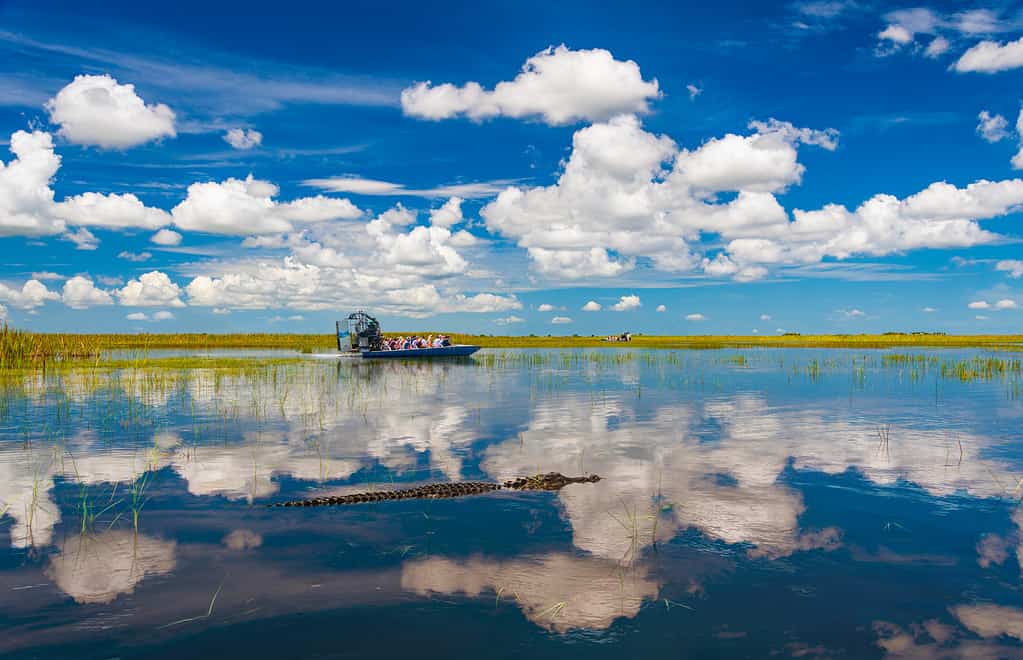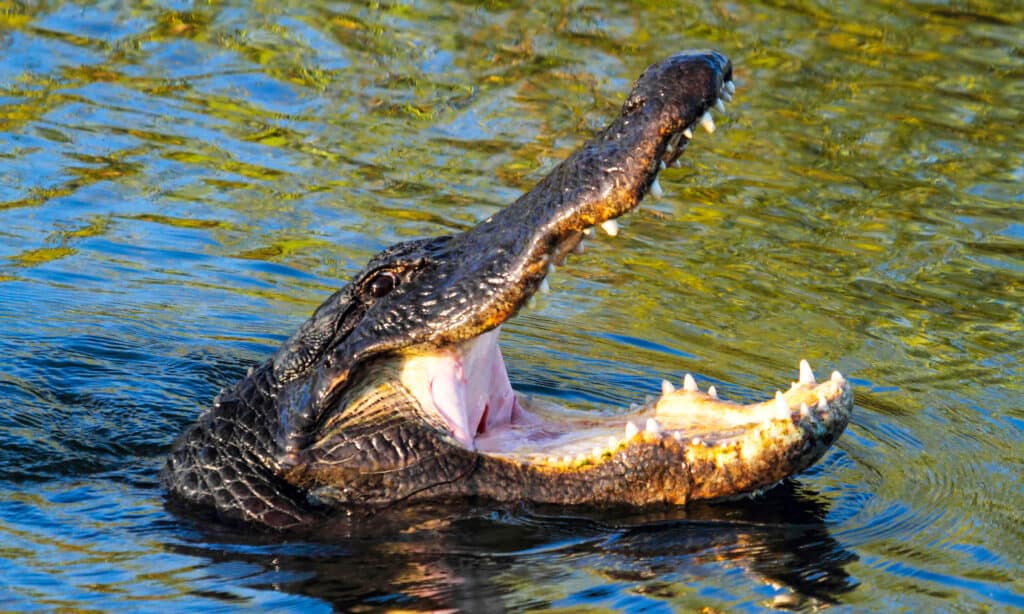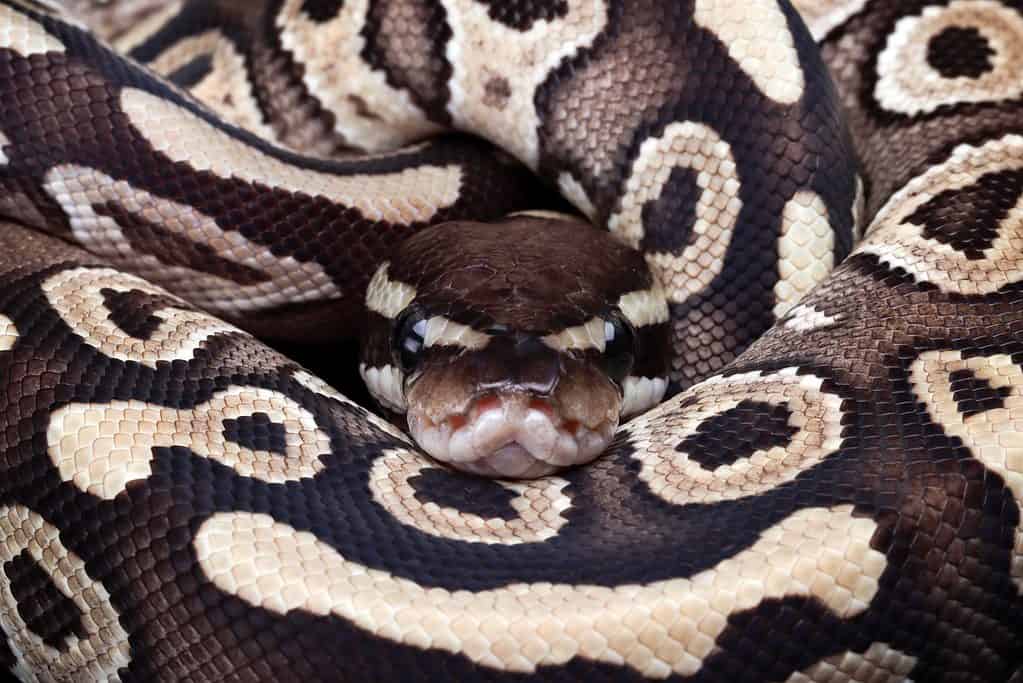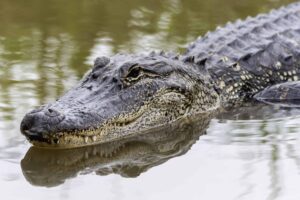Continue reading for our analysis...

In the video below, it’s not a dog-eat-dog world, it’s a reptile-eat-reptile world. What better setting than the Florida Everglades for footage that includes both a ravenous alligator and a massive python?
Learn what other types of animals live in this habitat before watching the scene unfold yourself!
What Animals Live In The Florida Everglades?

Everglades National Park spans 1.5 million acres of in Florida
©allouphoto/Shutterstock.com
A wide variety of animals call the Florida Everglades home. Along with alligators and reptiles like pythons, there are also mammals like white-tailed deer, bobcats, raccoons, gray foxes, Florida panthers, and black bears. Aquatic species include the West Indian manatee and dolphins. Some birds in the area include wood storks, great blue herons, snail kites, and bald eagles.
How Large Do Alligators Get?

Females typically attain an average length of 8.2 feet when fully grown.
©iStock.com/Bradley Proxmire
Females typically attain an average length of 8.2 feet when fully grown, while males tend to average around 11.2 feet in length. In some exceptional cases, particularly sizable males can reach an astonishing weight close to half a ton or 1,000 pounds. The American alligator’s habitat spans from North Carolina to the Rio Grande in Texas within the United States.
The most significant alligator ever documented stretched to a length of 5.8 meters, while the heaviest one, captured near Gainesville, Florida, weighed in at 473 kilograms, a recent occurrence.
Nevertheless, finding such massive and weighty creatures is a rarity.
Where Exactly Is the Everglades?
The Everglades is located in the southern portion of Florida. It spans across a significant portion of the state, primarily in the southernmost region, and is bordered by the Gulf of Mexico to the west, the Atlantic Ocean to the east, and stretches from Lake Okeechobee in the north to Florida Bay in the south.
What Types Of Pythons Live In Florida?
One invasive species that has ravaged Florida is the Burmese python. These pythons are giant reptiles and though intimidating when you see them, aren’t as deadly as some smaller venomous snakes. They are constrictors, meaning they literally squeeze the life out of their prey before they swallow it whole. Other invasive snake species include the Northern African python and boa constrictor.

American alligators are found alongside pythons in the Florida Everglades.
©Steve Byland/Shutterstock.com
Gator Chomps Right Through Python
When the video below starts, you’re looking at an alligator in the center of the screen. It’s partially submerged so it’s not entirely clear what’s going on at first. Then, it starts emerging from the water toward the tall grasses surrounding it and you can see that it has something in its mouth. That something is so big that despite being caught in its mouth, its body is also getting dragged alongside the alligator’s body, all the way down to its tail.
The gator releases the python only for a second before chomping down on it again. A caption appears on the screen clarifying that this footage was captured in the Florida Everglades. The alligator’s head comes up out of the water with the huge, very dead python. Part of the python’s body falls out of the gator’s mouth limply, making a slapping sound as it lands back in the water. The gator gets more violent with it, lashing its head back and forth.
The gator manages to use that lashing back and forth motion to position the python’s body just ahead of it on the grass as if placing its dinner on a plate. It continues chomping down on the python, swallowing it piece by piece while satiating its carnivorous appetite.
Is It Normal Behavior for Alligators to Eat Pythons?

From time to time, alligators will consume either large snakes or even other alligators.
©Kurit afshen/Shutterstock.com
Young alligators are mostly known for eating insects, amphibians, small fish, and other invertebrates. As they grow, adult alligators’ diet expands to include rough fish, snakes, turtles, small mammals, and birds. Occasionally, alligators will eat either large snakes or each other.
While Python isn’t always on the menu, once those pythons get to a certain size, it’s pretty much just alligators that can eat them as they become too large for birds of prey.
On the other hand, pythons have even been known to eat alligators. Pythons will eat any mammal they can swallow, as they are opportunistic feeders.

The largest American alligator on record was 19 feet, two inches!
©timyee/Shutterstock.com
Have An Amazing Animal Video You Think The World Should See? Share It With Us!
If you’ve ever whipped out your camera at the perfect time and captured an incredible animal encounter, we want to see it! Millions of readers come to A-Z-Animals every month to read about and watch the world’s most interesting animals. If you have a video that you want to share with the world and have highlighted on our site, click the button below to see how you can quickly share it with us for a chance to be featured!
Thank you for reading! Have some feedback for us? Contact the AZ Animals editorial team.






